Circular saws play a vital role in the world of woodworking and construction, making it essential to understand the importance of their wattage. The wattage of a circular saw refers to the amount of power it consumes during operation. It serves as a crucial measurement for determining the performance and efficiency of the tool. By exploring the wattage of a circular saw, we can gain valuable insights into how it affects the cutting ability, versatility, and overall effectiveness of this indispensable woodworking and construction tool.
Understanding Circular Saws and Power Requirements
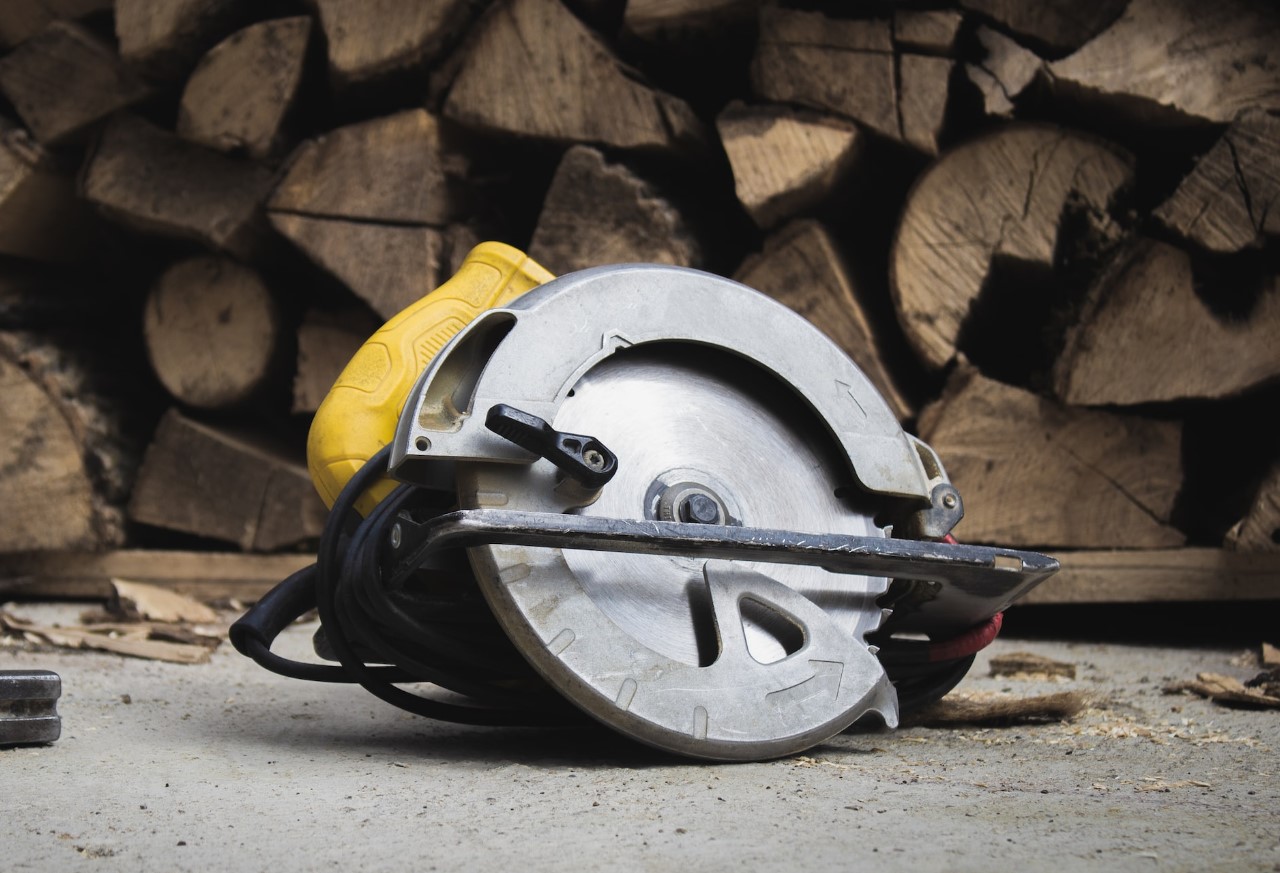
Circular saws are powerful tools used in woodworking and construction projects. They consist of several key components, including a circular blade with sharp teeth, a motor, a handle, and a base or shoe that rests on the material being cut. The motor is responsible for driving the blade and providing the necessary power for cutting through various materials.
The power rating of a circular saw is a crucial aspect to consider when selecting the right tool for a specific task. It determines the saw’s ability to handle different cutting requirements effectively. The power rating is typically indicated in watts and provides valuable information about the saw’s performance capabilities.
The wattage of a circular saw is a measurement unit that represents the amount of power it consumes while in operation. It directly correlates to the strength and efficiency of the saw. A higher wattage generally indicates a more powerful motor, allowing the saw to cut through denser or tougher materials with ease. Conversely, a lower wattage may limit the saw’s cutting ability, especially when dealing with thicker or harder materials.
Understanding the significance of wattage helps users make informed decisions when selecting a circular saw. By considering the wattage, woodworkers and construction professionals can ensure they have a tool that matches their cutting needs and provides optimal performance and efficiency for their projects.
Factors Affecting Wattage Requirements
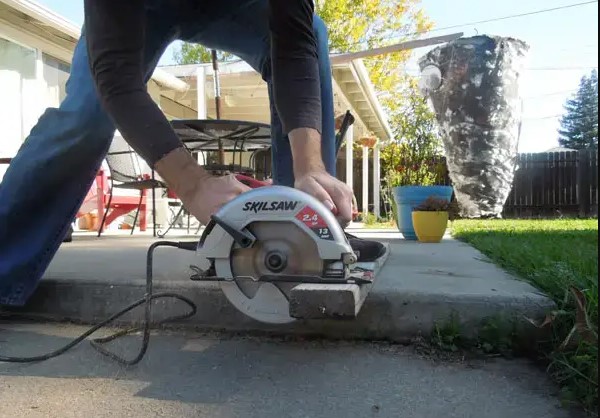
The wattage requirements of a circular saw can vary depending on several factors that directly influence its power needs. Understanding these factors is essential for determining the appropriate wattage for specific cutting tasks.
- Blade size and type: The size and type of blade used in a circular saw can significantly impact the power requirements. Larger blades generally require more power to rotate, especially when cutting through dense or thick materials. Additionally, different blade types, such as those designed for ripping or cross-cutting, may have varying tooth configurations, which can affect the cutting efficiency and power demands of the saw.
- Material and cutting depth: The nature and thickness of the material being cut directly affect the required wattage of a circular saw. Dense or hard materials like hardwood or metal typically require higher wattages to cut through efficiently. Similarly, cutting through thicker materials requires more power to overcome the resistance encountered during the cutting process. It is important to match the wattage of the circular saw with the intended material and cutting depth to ensure optimal performance and prevent motor strain.
- Bevel cuts and angles: Making bevel cuts or cutting at different angles with a circular saw can affect the power consumption. When a circular saw is tilted to make bevel cuts, the motor may experience increased resistance due to the change in cutting orientation. As a result, more power may be required to maintain the cutting performance. Similarly, cutting at steep angles or making intricate cuts can increase the power demands of the saw. Adjusting the wattage accordingly ensures smooth and efficient cutting in these scenarios.
By considering these factors, users can assess the specific requirements of their cutting tasks and select a circular saw with the appropriate wattage to ensure optimal performance and productivity.
Determining the Wattage for Your Circular Saw
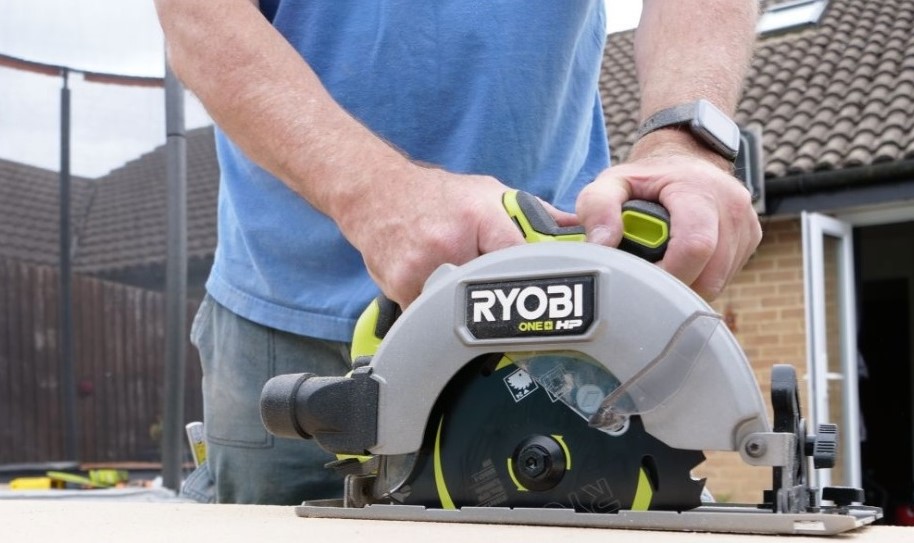
To determine the appropriate wattage for your circular saw, it’s helpful to consider industry standards, recommendations, and the specific requirements of your woodworking projects. Here are some guidelines to assist you in selecting the right wattage:
- Reference industry standards and recommendations: The woodworking industry often provides guidelines and recommendations for specific materials and cutting tasks. Manufacturers, professional associations, and online resources may offer valuable insights into the ideal wattage range for different applications. Consulting these references can help you make an informed decision.
- General guideline for wattage requirements: While wattage requirements can vary, depending on the specific task, there are some general guidelines to consider:
- For light-duty tasks and occasional use, a circular saw with a wattage rating between 1,200 to 1,500 watts should suffice. This range is suitable for cutting thinner boards and softer woods.
- For medium-duty tasks involving hardwoods and thicker materials, a circular saw with a wattage rating between 1,500 to 2,000 watts is recommended. This range provides sufficient power for efficient cutting.
- For heavy-duty and professional applications, such as cutting dense hardwoods, laminates, or metal, a circular saw with a wattage rating of 2,000 watts or higher is desirable. This higher wattage ensures the power and torque necessary to tackle demanding tasks.
- Benefits of selecting a circular saw with slightly higher wattage: Opting for a circular saw with slightly higher wattage than the minimum requirement can offer several advantages.
- Increased versatility: A saw with higher wattage can handle a wider range of materials and cutting tasks, providing more flexibility in your woodworking projects.
- Improved cutting efficiency: Higher wattage translates to more power, resulting in smoother and more efficient cuts. It helps prevent motor strain and ensures consistent performance, particularly when dealing with thicker or denser materials.
- Future-proofing: Investing in a circular saw with slightly higher wattage allows you to be prepared for future projects that may require more power. It provides a buffer and reduces the likelihood of outgrowing your tool as your woodworking skills and projects progress.
Remember, these guidelines are meant to serve as a starting point. Adjustments may be necessary based on the specific requirements of your projects and the materials you work with. Always consider safety precautions and follow manufacturer recommendations when operating your circular saw.
Choosing the Right Circular Saw Wattage
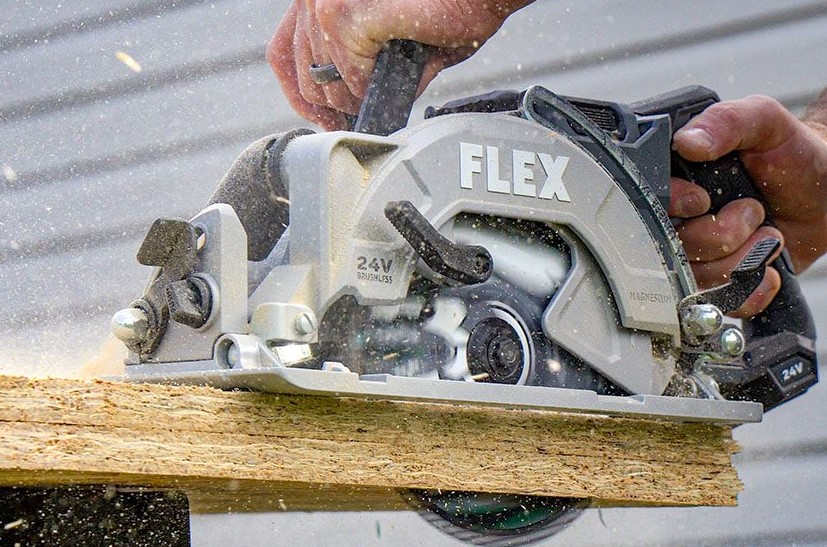
When selecting a circular saw, it’s crucial to find the right wattage that balances power requirements with other factors such as portability and budget. Here’s what you need to consider:
- Balancing power requirements with other factors: While wattage is an important consideration, it’s essential to assess your overall needs. Consider the following factors in conjunction with power requirements:
- Portability: If you require a portable tool for jobsites or projects that involve moving around frequently, you may prioritize a lighter and more compact circular saw. This might mean compromising on wattage slightly, but it ensures easier handling and mobility.
- Budget: Higher wattage circular saws tend to be more powerful and efficient, but they may also come at a higher cost. Determine your budget and weigh it against the power requirements to find the right balance. Remember, investing in a higher-wattage saw may offer long-term benefits if your projects become more demanding.
- Range of wattage options based on user needs and experience levels: Circular saws are available in a range of wattage options to accommodate various user needs and experience levels. Consider the following as a general guide:
- Beginner or light use: For beginners or those with lighter cutting needs, a circular saw in the range of 1,200 to 1,500 watts can be suitable. These models are typically more budget-friendly and offer enough power for basic woodworking tasks.
- Intermediate or moderate use: If you have some experience and require a circular saw for moderate woodworking projects, consider a wattage range of 1,500 to 2,000 watts. These saws offer a balance between power and affordability, making them suitable for a range of applications.
- Professional or heavy use: Professionals and those working with demanding materials or frequent heavy-duty projects should opt for circular saws with wattage ratings of 2,000 watts or higher. These high-wattage models provide the necessary power and durability for intensive use.
- Advantages and disadvantages of corded and cordless circular saws: Circular saws are available in both corded and cordless (battery-powered) options. Consider their impact on wattage and performance:
- Corded circular saws: Corded models typically offer higher wattages and consistent power delivery, making them suitable for heavy-duty applications. They do not have battery limitations, ensuring uninterrupted cutting power. However, they require a power outlet and may be less portable.
- Cordless circular saws: Cordless models provide greater portability and flexibility, but they may have slightly lower wattages compared to corded saws. The performance and cutting ability can vary based on battery technology and charge. They are convenient for jobsites without access to power outlets but may require spare batteries for extended use.
Consider your specific needs, whether you prioritize power, portability, or a combination of both when choosing between corded and cordless circular saws.
By carefully evaluating the balance between power requirements, portability, budget, and corded versus cordless options, you can select the right circular saw wattage that meets your needs and delivers optimal performance for your woodworking projects.
Maintaining and Optimizing Circular Saw Performance
To ensure the optimal performance of your circular saw and extend its lifespan, it’s important to follow proper maintenance practices. Here are some tips to help you maintain your circular saw and optimize its performance:
- Regular maintenance: Regular maintenance is crucial for keeping your circular saw in top condition. Follow these maintenance tips:
- Blade sharpening: Dull blades can cause inefficient cutting and put extra strain on the motor. Sharpen your circular saw blade regularly or replace it when necessary to maintain optimal cutting performance.
- Cleaning: Sawdust and debris can accumulate over time, affecting the saw’s performance. Clean the saw thoroughly after each use, including the blade guard, shoe, and motor housing. Use a brush or compressed air to remove dust and debris from hard-to-reach areas.
- Lubrication: Apply lubricant to the moving parts of the saw, such as the pivot points and depth adjustment mechanism. This helps reduce friction and ensures smooth operation.
- Using the correct wattage: Using the appropriate wattage for your circular saw is essential to avoid overloading the motor and reduce wear and tear. Here’s why it’s important:
- Motor strain: Using a lower wattage than required for a particular task can put excessive strain on the motor, leading to decreased performance and potential motor damage. Always match the wattage to the demands of the cutting task to ensure the motor operates within its intended capacity.
- Overheating: When a circular saw is consistently operated above its capacity due to inadequate wattage, it may overheat. Overheating can result in motor failure or damage to other components. Using the correct wattage helps prevent overheating and extends the lifespan of your saw.
- Cutting efficiency: Using the right wattage ensures optimal cutting efficiency. It provides the necessary power to cut through materials smoothly and effectively, reducing the risk of stalling or kickbacks.
By practicing regular maintenance, including blade sharpening, cleaning, and lubrication, and using the correct wattage for each cutting task, you can maintain the performance, reliability, and longevity of your circular saw.
Safety Considerations
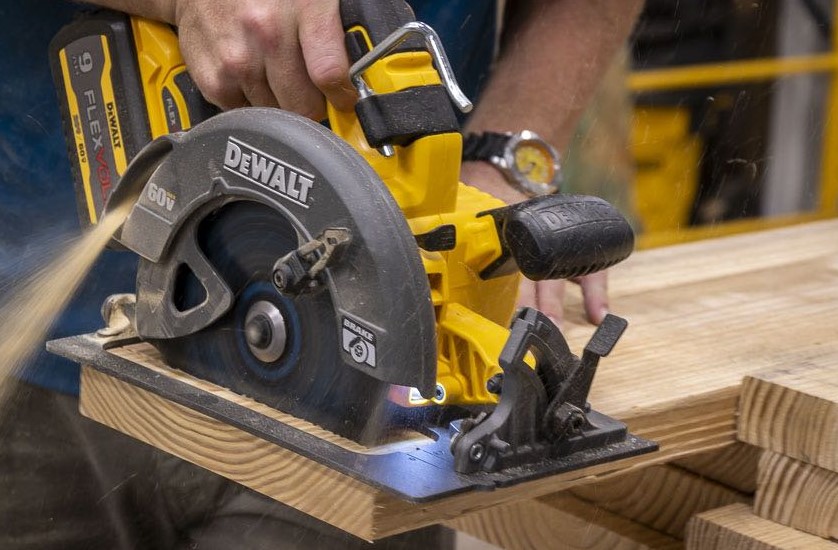
When operating a circular saw, safety should be a top priority. Understanding the importance of safety and using the appropriate wattage can help prevent accidents and ensure the well-being of the operator. Here are some key points to consider:
- Emphasizing the importance of safety: Circular saws are powerful tools that can cause severe injuries if not used properly. Safety measures should always be followed, including:
- Personal protective equipment (PPE): Wear appropriate PPE, such as safety glasses, hearing protection, and gloves, to protect against potential hazards like flying debris and loud noise.
- Secure workpiece: Ensure the workpiece is securely clamped or supported to prevent movement during cutting, reducing the risk of kickbacks.
- Proper body position: Stand in a stable position with a firm grip on the saw and maintain proper balance throughout the cutting process.
- Cutting line visibility: Clear the work area and ensure a clear line of sight to the cutting line. This helps maintain control and accuracy while minimizing the risk of accidents.
- Relevance of using the appropriate wattage for safety: Using the correct wattage is essential for operator safety when operating a circular saw. Here’s why:
- Motor stability: Operating a circular saw with wattage below the requirements can strain the motor and lead to instability during cutting. This instability can increase the risk of accidents, including loss of control or blade binding.
- Reduced effectiveness: Insufficient wattage may result in a lack of cutting power, leading operators to exert additional force or use unsafe techniques to achieve the desired cut. This can increase the likelihood of accidents and injuries.
- Safety statistics and studies: While specific statistics on the impact of using the wrong wattage may be limited, studies and reports emphasize the importance of using the appropriate power for tool safety. Research has shown that using tools with inadequate power can lead to compromised performance, increased risk of accidents, and potential damage to the tool itself. These findings highlight the significance of selecting the correct wattage for a circular saw to ensure operator safety and overall tool efficiency.
By prioritizing safety, using the appropriate wattage, and following recommended guidelines, operators can mitigate risks, prevent accidents, and create a safer working environment when using a circular saw.
Best Practices for Efficient and Accurate Cutting
To achieve efficient and accurate cutting results with a circular saw, it’s important to follow best practices and consider the relationship between wattage, blade quality, and cutting precision. Here are some expert tips to help you maximize your cutting performance:
Proper setup and alignment:
- Ensure the blade is properly aligned with the cutting line before starting the saw. Use guides or clamps to maintain accuracy and prevent the blade from deviating off-course.
Use the appropriate blade:
- Different materials require specific blade types. Select a blade that is suitable for the material you are cutting. Blades with the correct tooth configuration and design optimize cutting efficiency and minimize strain on the motor.
Optimize wattage for the task:
- Match the wattage of your circular saw to the requirements of the cutting task. Sufficient wattage ensures that the saw can cut through the material smoothly and effectively, without bogging down or stalling.
Feed rate and cutting speed:
- Maintain a steady and controlled feed rate to prevent binding or kickbacks. Push the saw at a consistent speed through the material, allowing the blade to cut smoothly without forcing it.
Cutting depth and multiple passes:
- Adjust the cutting depth of the saw according to the material thickness. For thick materials, it may be necessary to make multiple passes at progressively deeper depths to avoid overloading the saw and ensure clean and accurate cuts.
Support and stability:
- Provide adequate support for the workpiece to minimize vibrations and ensure stability during cutting. Use sawhorses, workbenches, or additional clamping to secure the material and prevent movement.
Maintain a clean work area:
- Clear away debris, sawdust, and other obstacles from the work area. A clean work surface allows for better visibility of the cutting line and reduces the risk of accidents or blade deviations.
The relationship between wattage, blade quality, and cutting precision is interconnected. Higher wattage allows the blade to maintain its cutting speed and efficiency, resulting in cleaner and more precise cuts. Additionally, using high-quality blades designed for specific materials enhances cutting precision, reduces splintering, and improves overall performance.
While specific studies on the direct connection between power and cutting performance may vary, it is widely recognized that using the appropriate power and blade combination results in improved cutting accuracy and efficiency. Expert techniques and experiences from professional woodworkers and manufacturers further support this understanding.
By following these best practices, considering the relationship between wattage and blade quality, and exploring expert techniques, you can optimize the efficiency and accuracy of your circular saw cuts for superior woodworking results.
Conclusion
In conclusion, understanding the wattage requirements for circular saws is essential for achieving optimal performance, efficiency, and safety in woodworking and construction projects. Throughout this article, we have covered several key points:
- We began by introducing the significance of circular saw wattage in woodworking and construction, emphasizing its impact on performance and efficiency.
- Factors affecting wattage requirements, such as blade size and type, material and cutting depth, and bevel cuts, were discussed. These factors help determine the specific wattage needed for different cutting tasks.
- We explored ways to determine the appropriate wattage for your circular saw, including referencing industry standards, providing general guidelines based on common woodworking projects, and highlighting the benefits of selecting a slightly higher wattage for increased versatility and cutting efficiency.
- The importance of maintaining and optimizing circular saw performance was emphasized, with tips for maintenance, blade sharpening, cleaning, and using the correct wattage to prevent overloading and reduce wear and tear.
- Safety considerations were addressed, highlighting the importance of prioritizing safety when operating a circular saw and the relevance of using the appropriate wattage for operator safety.
- Best practices for efficient and accurate cutting were shared, focusing on maximizing cutting performance through proper setup and alignment, blade selection, wattage optimization, feed rate, cutting depth, support and stability, and maintaining a clean work area.
In summary, selecting the right wattage for a circular saw is crucial for achieving optimal performance, precision, and safety. By considering specific needs, tasks, and materials, users can make informed decisions to ensure their circular saw meets the power requirements of their projects.
We encourage readers to carefully assess their cutting needs, refer to industry standards and guidelines, and prioritize safety when selecting and using a circular saw. By understanding and utilizing the appropriate wattage, woodworkers and construction professionals can enhance their cutting experience, achieve better results, and operate their circular saws with confidence.